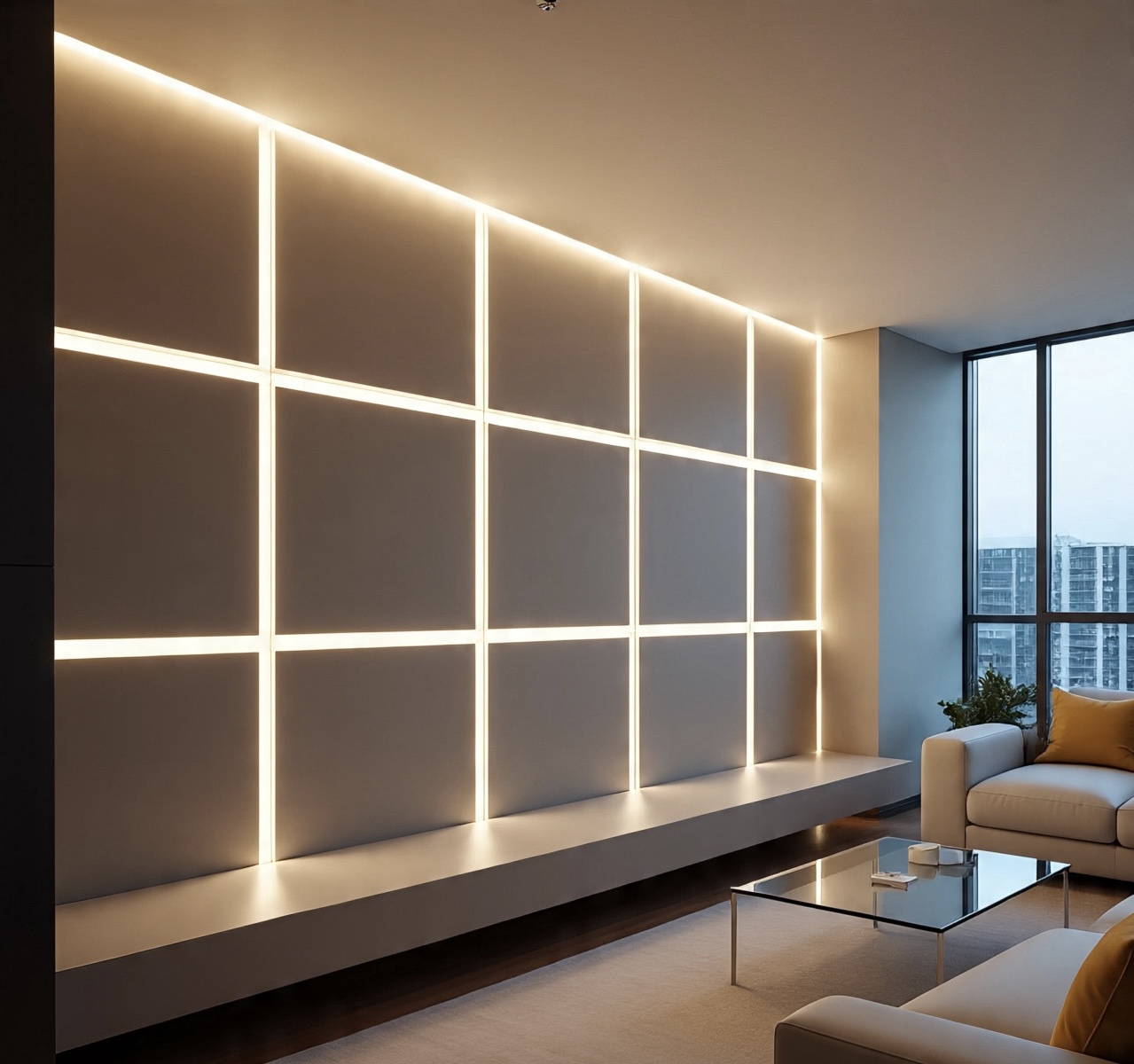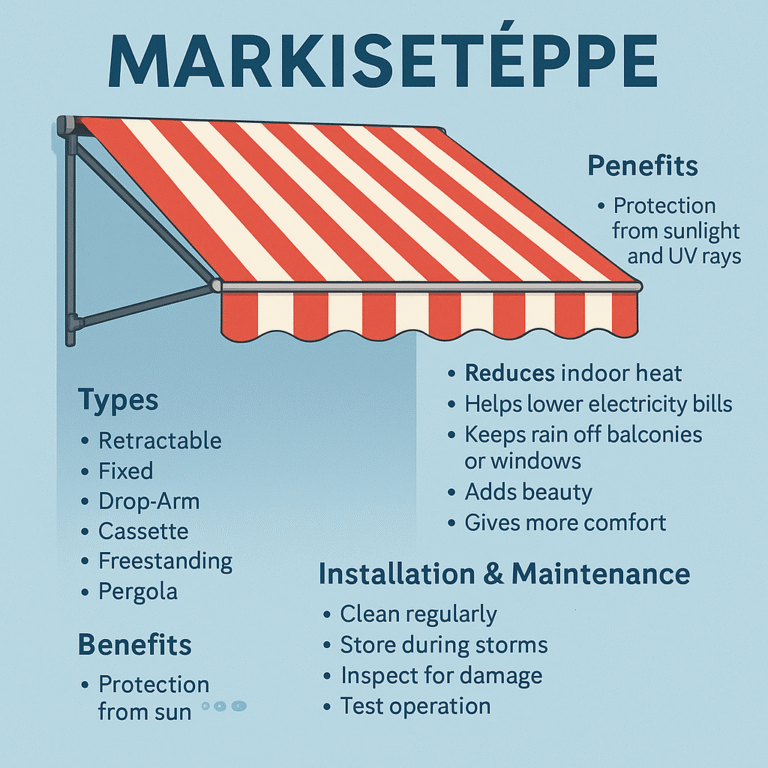LED Wall Lighting: Modern Guide to Bright, Efficient Home Lighting
LED wall lighting has changed how homes look and feel. These lights offer brightness without wasting energy. They last much longer than old bulbs. Best of all, they save money on electricity bills every month.
This guide explains everything you need to know. You’ll learn how these lights work. You’ll discover where to place them. You’ll understand why they’re worth the investment.
What Are LED Wall Lights?
LED lights use tiny diodes that create light. They mount flat against your walls. Think of them as modern replacements for old-style wall lamps.
These lights work differently than incandescent bulbs. Old bulbs release heat as a side effect. LED lights turn electricity directly into light. This makes them much more efficient.
LED wall lights come in many shapes. Some look like simple rectangles. Others have artistic designs. You can find them in different colors and sizes.
The best part? They use about 75% less electricity than old bulbs. A bulb that lasts 10,000 hours will be replaced 5 times. An LED lasting 50,000 hours will work for decades.
Why LED Wall Lights Matter for Your Home
Your lighting choice affects your home in several ways. It impacts your utility bills. It influences how your rooms feel. It shapes your home’s overall appearance.
LED wall lights solve multiple problems at once. They provide good light for reading and working. They create nice backgrounds for relaxing. They help secure your outdoor spaces at night.
Key Advantages You’ll Notice Right Away
Lower Energy Bills: LED lights use so little power that you’ll see savings quickly. Replacing just five bulbs can cut lighting costs in half.
Years of Use Without Replacement: Forgetting about burnt-out bulbs is one of the best benefits. These lights work for 10 to 20 years.
Better Light Quality: LED lights don’t flicker. Colors look natural and true. Your eyes feel less tired when reading or working.
Cooler Operation: Old bulbs get very hot. LED lights stay cool. This makes them safer for kids and pets.
Instant Brightness: There’s no waiting for lights to warm up. They reach full brightness the moment you flip the switch.
Different Types of LED Wall Lights
Wall lighting comes in different styles for different needs. Understanding your options helps you choose the right one.
Indoor LED Wall Light Options
Decorative Sconces: These fixtures serve as wall art. They sit on either side of mirrors or doorways. They make rooms look more finished and put-together.
Reading Lights: Small focused lights mount beside beds or chairs. They let you read without disturbing others. They provide task lighting in the right spot.
Picture Lights: These specialized fixtures hang above artwork. They show off paintings and photos beautifully. They don’t damage artwork because they produce minimal heat.
Recessed Wall Lights: These flush mount into walls. They look clean and modern. They work well in hallways and bedrooms.
Under-Cabinet Kitchen Lights: These mount under kitchen cupboards. They brighten countertops for cooking. They make food preparation easier and safer.
Architectural Strip Lights: Long, thin LED strips create continuous lines of light. They add modern elegance to walls. They work in contemporary homes and commercial spaces.
Outdoor LED Wall Light Options
Wall Pack Lights: Heavy-duty fixtures designed for building exteriors. They light up parking areas, entryways, and loading docks. They’re built to handle rain, wind, and temperature changes.
Security Floodlights: Wide, powerful beams cover large areas. They work for patios, driveways, and yards. They make dark spaces bright and visible.
Motion-Activated Lights: These turn on when movement is detected. They save energy by only running when needed. They deter intruders and provide safety.
Dusk-to-Dawn Lights: Smart sensors turn these on at sunset. They turn off at sunrise. You never need to control them manually.
Ornamental Outdoor Sconces: These look attractive while providing light. They sit beside garage doors or porches. They blend function with good looks.
Dark Sky Lights: These special fixtures point light downward. They prevent light from shooting up into the sky. They help protect natural darkness while lighting your space.
Picking the Right LED Wall Light for Your Space
Choosing the right light involves thinking about several things. The wrong choice wastes money. The right choice improves your space.
Think About These Factors
Purpose: Ask yourself what job this light needs to do. Do you need general background light? Are you highlighting something specific? Do you need bright task lighting?
Brightness Level: Brightness is measured in lumens. More lumens mean brighter light. A bathroom mirror light needs 2,000 to 3,000 lumens. A hallway light might need 1,000 lumens.
Color of Light: Light comes in warm and cool tones. Warm light (2700K) feels cozy and relaxing. Cool light (4000K-5000K) feels bright and energizing. Kitchens and offices usually benefit from cooler light. Bedrooms and living rooms typically prefer warmer light.
Room Size: Small bathrooms need less powerful lights. Large outdoor areas need brighter fixtures. Measure your space to choose appropriately.
Your Home’s Style: Modern homes suit sleek, minimal lights. Traditional homes look better with classic fixtures. Mediterranean homes work well with ornate sconces. Match your lighting to your home’s personality.
Weather Resistance: Outdoor lights must handle rain and temperature swings. Look for weatherproof ratings of IP65 or higher. Indoor lights don’t need this protection.
Installing LED Wall Lights (What You Should Know)
Most homeowners can install simple LED wall lights. Some installations need professional electricians.
When to Install Yourself
Simple installations include replacing existing fixtures. If electrical outlets already exist, you might just need to mount and connect the light.
Sconces that plug into outlets are easiest. You just hang them and plug them in. No wiring knowledge required.
When to Hire a Professional
Complex wiring needs an electrician. Adding brand new electrical circuits requires expertise. High voltage installations (277V) need professional help. Outdoor installations often need weatherproofing knowledge.
Basic Installation Steps
Turn off power at your circuit breaker first. Safety comes before everything else.
Remove any old fixtures if replacing. Clean the wall surface. Check that your mounting surface is strong enough.
Follow the manufacturer’s instructions exactly. Different lights have different requirements. Use the right wall anchors for your wall type (drywall, concrete, brick).
Apply weatherproof sealant around outdoor fixtures. This prevents water from getting behind the wall.
Test your light before finishing. Make sure brightness and direction are correct.
Making Your LED Wall Lights Smarter
Modern LED lights can do more than just turn on and off. Smart features add convenience and save energy.
Phone Control: Apps let you control lights from anywhere. Turn them off when you’re away. Turn them on before you arrive home.
Voice Commands: Say “Alexa, brighten the bedroom lights.” Voice assistants respond instantly. No switches to find in the dark.
Automatic Scheduling: Program lights to turn on and off automatically. They can follow your daily routine. They can make it look like someone’s home when you’re away.
Dimming Capability: Adjust brightness to match your mood. Bright for working, dim for relaxing. Save electricity by using only the brightness you need.
Color Changing Options: Some LED lights change color. Create different moods for different times. Match your lighting to your activities.
Energy Monitoring: Check how much electricity your lights use. Find ways to use even less power.
Real Money Savings From LED Wall Lights
Numbers tell the story. Switching to LEDs saves real money.
Electricity Cost: An old 60-watt bulb costs about $10 per year to run. The same brightness from LED costs about $2. That’s $8 saved per bulb annually.
Replacement Costs: Old bulbs cost $2-5 each. You replace them often. LED bulbs cost more upfront but last 25 times longer. You buy replacements far less frequently.
Quick Payback: Higher upfront costs pay for themselves fast. Most LED upgrades save money within one to two years.
Long-Term Savings: An LED light lasting 15 years saves hundreds of dollars compared to bulbs replaced repeatedly.
Caring for Your LED Wall Lights
Good news: LED lights need almost no maintenance. They last so long that upkeep is minimal.
Annual Checks: Look at the light once per year. Check for dirt or damage. Wipe off dust with a soft cloth.
Inspect Connections: Make sure wires stay secure. Look for any water damage on outdoor lights.
Clean the Lens: A dirty lens looks dimmer. Gentle cleaning with a soft cloth restores brightness.
Check for Corrosion: Outdoor lights in salty or industrial areas might corrode. Apply protective coating if needed.
Replace Gaskets: On outdoor lights, rubber seals can deteriorate after 5-7 years. New seals prevent water damage.
LED Wall Lights for Different Rooms
Each room has unique lighting needs. The right fixtures improve every space.
Bedroom Lighting
Bedrooms need soft, relaxing light. Reading lights beside the bed solve the problem. They let one person read while the other sleeps. Dimmer switches let you adjust brightness to match your mood.
Kitchen Lighting
Kitchens need bright task lighting. Under-cabinet lights brighten countertops for cooking. Over-sink fixtures illuminate washing areas clearly. Good kitchen lighting makes food preparation safer and easier.
Bathroom Lighting
Mirrors need even, shadow-free light. Vanity sconces on both sides work best. They provide the light you need for grooming. They eliminate harsh shadows on your face.
Living Room Lighting
Living rooms benefit from layered lighting. Accent lights highlight artwork. Ambient lights provide general brightness. Dimmer switches let you set the perfect mood for entertaining or relaxing.
Hallway and Staircase Lighting
Hallways need consistent, reliable light. Wall sconces spaced regularly create safe passage. Staircase lighting prevents trips and falls. Motion sensors save energy in rarely-used hallways.
Outdoor Entryway Lighting
Entryways need bright, welcoming light. Dual sconces flanking doors look professional. They improve security and make guests feel welcome. Motion sensors add extra safety when you arrive home.
Environmental Benefits Beyond Saving Money
LED lights help the planet in important ways.
Lower Electricity Demand: Fewer lights means less power generation. Less power means fewer coal plants running. That’s real environmental impact.
No Toxic Materials: Old fluorescent bulbs contain mercury. LED bulbs contain no hazardous substances. They’re safer to handle and dispose of.
Reduced Light Pollution: Many LED fixtures direct light downward. Upward light creates sky glow and harms wildlife. Responsible fixtures protect the night sky.
Less Manufacturing Waste: Long-lasting LEDs mean fewer replacements. Fewer replacements mean less factory production. That saves resources and reduces manufacturing pollution.
Recyclable Components: LED bulbs contain metals and plastics that recycling facilities can process. Responsible disposal completes the environmental cycle.
Common Questions About LED Wall Lights
Do LED lights work in cold weather? Yes, LEDs actually perform better in cold conditions. Traditional lights struggle in freezing temperatures. LED lights work reliably outdoors year-round.
Can you use LED lights with old dimmer switches? Maybe.Most LED lights need LED-compatible dimmers. Check your light’s specifications. Many stores sell inexpensive LED dimmer switches.
Are LED lights safe for damp bathrooms? Yes, when properly installed. Use fixtures rated for wet locations (usually IP65 or higher). Proper installation prevents water damage.
How bright should wall lights be? It depends on the room. Small bathrooms need 1,500-3,000 lumens. Large living rooms might need 2,000-4,000 lumens. Start with manufacturer recommendations for your room size.
Do all LED lights have a long lifespan? Quality matters. Cheap LEDs might fail sooner. Premium brands typically last 40,000-50,000 hours. Buy from reputable manufacturers.
Final Thoughts on LED Wall Lighting
LED wall lighting represents smart choices for your home. They’re not just about saving money, though that matters. They’re about making your spaces look better, feel better, and work better.
The initial investment pays back quickly. Energy bills drop immediately. Burnt-out bulbs become a forgotten problem. Your home looks more attractive and modern.
Whether you’re renovating a single room or your entire home, LED wall lights offer solutions that match your needs. Professional installation ensures everything works perfectly. Doing it yourself saves money on simple projects.
The lighting in your home influences every moment you spend there. Make those moments better with efficient, beautiful, long-lasting LED wall lights. Your wallet and the environment will thank you.






